|
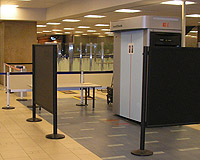
|
|
Photo by TSA |
The U.S. Transportation Security Administration (TSA) unveiled an operational test to evaluate backscatter technology at Phoenix Sky Harbor Airport in the United States.
This new technology can detect weapons, explosives and other metallic and non-metallic threat items concealed under layers of clothing without physical contact, and TSA has applied multiple protections for passengers’ privacy.
”Privacy and security are not mutually exclusive, and backscatter has potential to be a valuable tool in our layered security approach,” said TSA Administrator Kip Hawley. ”There will be opportunity for continued public dialogue as we see how this technology works in the airport setting.”
During test operations, passengers will participate on a voluntary basis only. In addition to usual effectiveness and suitability assessments, TSA will examine operational issues, including throughput, privacy considerations, training, safety of use and perceptions by the traveling public.
Passengers volunteering to participate in the operational test will be asked to stand for two separate scans, one facing the system and one facing away. A Transportation Security Officer will guide the passenger through the process, and each scan will take less than 10 seconds. The entire screening process will take less than a minute.
TSA’s privacy-filtered image looks like a chalk outline of the person’s body, and shows any concealed items including weapons, explosives and other metallic and non-metallic threat items. The officer attending the passenger will not view the image, and as an additional measure, the officer viewing the image will be remotely located and unable to associate the image with the passenger being screened. Once viewed remotely, the image cannot be stored, transmitted or printed.
X-ray backscatter technology uses a narrow, low intensity x-ray beam, scanned over the body’s surface at high speed. The amount of x-ray radiation used for backscatter technology is equivalent to approximately 15 minutes of exposure to naturally-occurring background radiation from sources such as the sun’s rays.
|
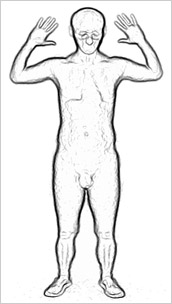 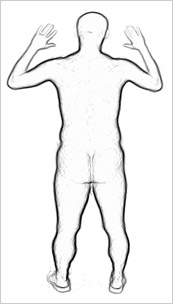 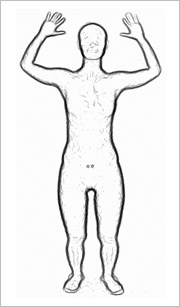 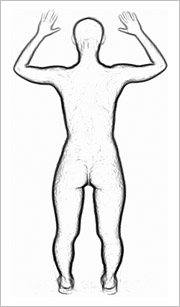
|
|
|
|
|
Male Front/Rear View (Source: TSA) Female Front/Rear View (Source: TSA) |
|
|
|
For more information, please send your e-mails to swm@infothe.com.
ⓒ2007 www.SecurityWorldMag.com. All rights reserved.
|



